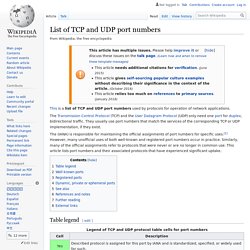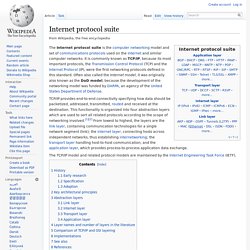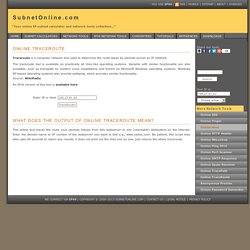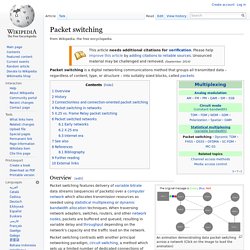

Home - Networking Academy. CET2600 20152 Spring A16 Syllabus. IPCalc.org - Your SysAdmin Toolbox. Subnet Calculator - IPv4/IPv6 - TunnelsUP. Example Inputs IPv4 IPv6 URL Parameters It is possible to add the IP address to the URL to go directly to that IP and calculate it.

Each of the following URLs will work: 255.255.255. This allows for using keyword searches in Firefox. About This free online subnet calculator allows for the input of a netmask, a Cisco wildcard mask or /CIDR notation. IP Subnet Calculator - SubnetOnline.com.
IoE. OSI Model. Cisco Systems, Inc. Cisco Packet Tracer 6.1 : Download free labs and tutorials for CCNA certification exam preparation. Wireshark · Go Deep. List of TCP and UDP port numbers. Wikipedia list article This is a list of TCP and UDP port numbers used by protocols for operation of network applications.

The (IANA) is responsible for maintaining the official assignments of port numbers for specific uses.[1] However, many unofficial uses of both well-known and registered port numbers occur in practice. Similarly, many of the official assignments refer to protocols that were never or are no longer in common use. This article lists port numbers and their associated protocols that have experienced significant uptake. Table legend[edit] Well-known ports[edit] The port numbers in the range from 0 to 1023 (0 to 210 − 1) are the well-known ports or system ports.[3] They are used by system processes that provide widely used types of network services. Registered ports[edit] The range of port numbers from 1024 to 49151 (210 to 214 + 215 − 1) are the registered ports. Dynamic, private or ephemeral ports[edit] See also[edit] References and notes[edit] Stretch, Jeremy.
Internet protocol suite. The Internet protocol suite is the computer networking model and set of communications protocols used on the Internet and similar computer networks.

It is commonly known as TCP/IP, because its most important protocols, the Transmission Control Protocol (TCP) and the Internet Protocol (IP), were the first networking protocols defined in this standard. Often also called the Internet model, it was originally also known as the DoD model, because the development of the networking model was funded by DARPA, an agency of the United States Department of Defense. TCP/IP provides end-to-end connectivity specifying how data should be packetized, addressed, transmitted, routed and received at the destination. Brief History of the Internet - Internet Timeline. Barry M.

Leiner, Vinton G. Cerf, David D. Clark, Robert E. Kahn, Leonard Kleinrock, Daniel C. Lynch, Jon Postel, Larry G. Published: 1997 Introduction. TCP 3 way handshake joke. Tera Term Open Source Project. Online TraceRoute - SubnetOnline.com. "Your online IP subnet calculator and network tools collection...

" Traceroute is a computer network tool used to determine the route taken by packets across an IP network. The traceroute tool is available on practically all Unix-like operating systems. Variants with similar functionality are also available, such as tracepath on modern Linux installations and tracert on Microsoft Windows operating systems. Windows NT-based operating systems also provide pathping, which provides similar functionality. Source: WikiPedia An IPv6 version of this tool is available here! Whois Lookup, Domain Availability & IP Search - DomainTools. Traceroute - VisualRoute - Download Page. Packet switching. Packet switching is a digital networking communications method that groups all transmitted data – regardless of content, type, or structure – into suitably sized blocks, called packets.

Overview[edit] An animation demonstrating data packet switching across a network (Click on the image to load the animation) Packet switching features delivery of variable bitrate data streams (sequences of packets) over a computer network which allocates transmission resources as needed using statistical multiplexing or dynamic bandwidth allocation techniques. When traversing network adapters, switches, routers, and other network nodes, packets are buffered and queued, resulting in variable delay and throughput depending on the network's capacity and the traffic load on the network.
History[edit] Domain Name System. The Domain Name System (DNS) is a hierarchical distributed naming system for computers, services, or any resource connected to the Internet or a private network.

It associates various information with domain names assigned to each of the participating entities. Most prominently, it translates domain names, which can be easily memorized by humans, to the numerical IP addresses needed for the purpose of computer services and devices worldwide. The Domain Name System is an essential component of the functionality of most Internet services because it is the Internet's primary directory service. The Domain Name System distributes the responsibility of assigning domain names and mapping those names to IP addresses by designating authoritative name servers for each domain. Authoritative name servers are assigned to be responsible for their supported domains, and may delegate authority over sub-domains to other name servers.
SANS Information Security Training. Bob Metcalfe on the First Ethernet LAN. Vint Cerf on the History of Packets. Len Kleinrock on the Theory of Packets. Unknown steve jobs indd. TCP/IP and Subnet Masking. TCP/IP and the OSI Model Explained!